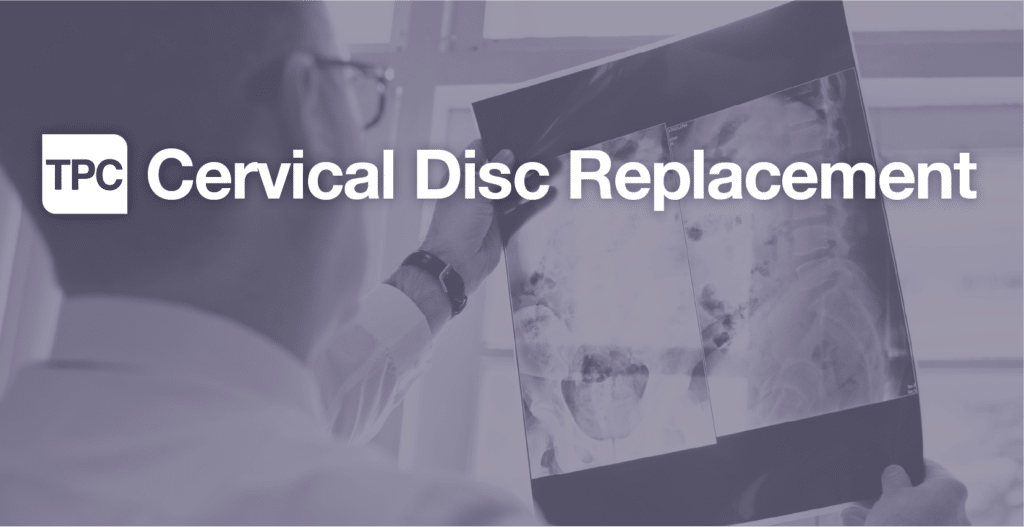Cervical Disc Replacement
The cervical spine consists of vertebrae and intervertebral discs. Over time, these discs can degenerate or sustain damage. Cervical disc replacement involves the surgical replacement of the damaged disc with a prosthetic implant – meant to perform like your own natural discs.

What is Cervical Disc Replacement?
During a cervical disc replacement, the surgeon will remove the damaged cervical disc that’s causing pain or weakness and replace it with an artificial disc, the prosthetic implant – meant to perform like your own natural discs.
What Types of Pain Does Cervical Disc Replacement Treat?
The cervical disc replacement procedure treats pain, numbness, and weakness in the vertebrae caused by disc degeneration or damage. Problems with the cervical disc typically occur over time with age, and injury or physical stress are common culprits for this degeneration.
The type of pain typically associated with cervical disc degeneration include:
- Neck pain and stiffness
- Headache
- Weakness in the shoulders, arms, hands, or legs
- Numbness in the arms
- Pain in the shoulders and arms
How Does Cervical Disc Replacement Work?
The cervical discs support the vertebral bones in the neck and the range of motion for your head. When a disc becomes damaged or worn down, this can significantly impact cervical mobility, leading to pain or stiffness, weakness, and numbing sensations.
To combat this problem, cervical disc replacement removes the damaged disc and substitutes it with an artificial disc meant to function like your original disc prior to any damage. This allows spinal nerves to provide the upper body with sensation and movement.
Expectations and Recovery
Following the cervical disc replacement procedure, you will likely go home the same day and recover at home. In some instances, you may be required to spend up to two days in the hospital as you recover from the procedure. During this time, you must continue staying hydrated and take any pain medications prescribed.
You will begin your home exercise program the day following surgery, and certain patients may require formal physical therapy exercises to be added at the 2-week post-op appointment. No collar is required for this procedure because it is meant to preserve the motion of your neck. Most people can resume activities that don’t require heavy lifting within a week or two following surgery.
It’s important to follow your doctor’s instructions so your body appropriately adjusts to the artificial disc. As your body continues to heal, you can expect alleviation of neck discomfort or stiffness and enhanced cervical mobility.


Get the care you need within 24 hours*
We know when you’re looking for relief for your chronic pain, you can’t wait any longer than you already have. This is why we can schedule you with an appointment within 24 hours at most of our pain centers across the Valley, so you can start your journey to life-long pain relief as soon as tomorrow.



